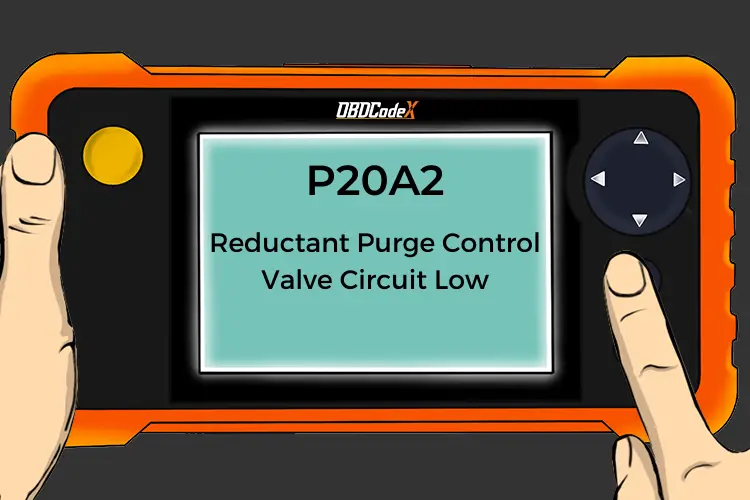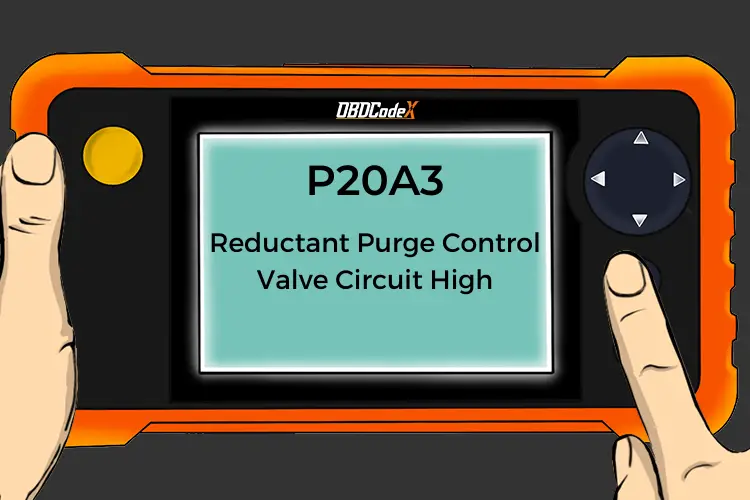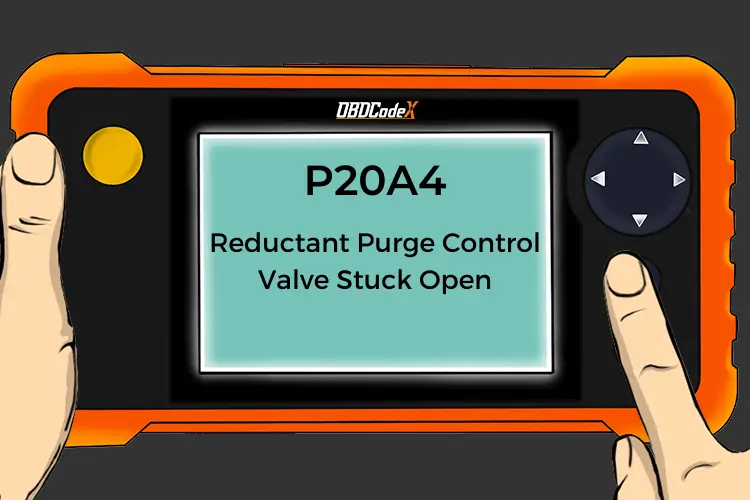P20A0: Reductant Purge Control Valve Circuit /Open
Is your scanner showing P20A0?
No worries. We'll show you what it means and how to deal with it.
P20A0: Reductant Purge Control Valve Circuit /Open
OVERVIEWWhat Does The P20A0 Code Mean?
OBD-II trouble code P20A0 and related codes P20A1, P20A2, P20A3, P20A4 and P20A5 are associated with the reductant purge control valve circuit. This circuit is also known as the diesel exhaust fluid system (DEF).
The purpose of the reductant purge control valve circuit is to send a signal to Power Control Module (PCM) or the Engine Control Module (ECM) as a reference point to determine when the reductant pump needs to reverse flow and purge the DEF system.
This process is used to assist in converting leftover exhaust particles into harmless gases. The DEF system is designed to convert harmful NOx gases to Nitrogen, Carbon Dioxide, and water to protect the environment.
When the PCM or ECM detects either an open state or improper voltage or resistance within the reductant purge control valve circuit, code P20A0 will be set and the check engine light will be illuminated.
What Are The Symptoms Of The P20A0 Code?
Symptoms of a P20A0 trouble code may include:
- Poor engine performance
- Decreased fuel economy
- Check engine light illuminated
What Are The Potential Causes Of The P20A0 Code?
Causes for this P20A0 code may include:
- Defective reductant purge control valve
- Faulty or damaged wiring
- Loose or defective control module ground strap
- Corroded, damaged or loose connector
- Defective fuse or fuse-able link (If applicable)
- Defective PCM or ECM
How Serious Is This P20A0 Code?
The severity of this code is normally moderate, but P20A0 can be severe if harmful gases are being expelled from the exhaust which becomes a safety concern requiring immediate attention.
How Can You Fix The P20A0 Code?
Step 1
The first step in the troubleshooting process for any malfunction is to research the Technical Service Bulletins (TSB’s) for the specific vehicle by year, model and power plant. In some circumstances, this can save a lot of time in the long run by pointing you in the right direction.
Step 2
The second step is to locate all components associated to the reductant purge control valve circuit and look for obvious physical damage. Based on the specific vehicle, the DEF system may incorporate several components including an electrically operated reductant pump, purge valve, pressure sensor, integrated level sensor, temperature sensor, system heaters, filters, an electrically controlled reductant injector and a reservoir.
Perform a thorough visual inspection to check the associated wiring for obvious defects such as scraping, rubbing, bare wires, or burn spots.
Step 3
Next is to check the connectors and connections for security, corrosion and damaged pins. This process must include all wiring connectors and connections to all components including the PCM or ECM. Consult the specific tech data for the vehicle to see if a fuse or fuse-able link is incorporated into the circuit.
Advanced Steps
The advanced steps become very vehicle specific and require the appropriate advanced equipment to perform accurately. These procedures require a digital multi meter and the specific technical references for the vehicle. In this situation, a pressure gauge may also be required to assist the troubleshooting process.
Voltage Checks
The reference voltage and the acceptable ranges may vary based on the specific vehicle and the circuit configuration. Specific technical data will include troubleshooting charts and the appropriate sequence to follow assisting you with an accurate diagnosis.
If this process identifies the absence of a power source or ground, continuity testing may be required to check the integrity of the wiring, connectors and other components. Continuity tests should always be performed with the power removed from the circuit and the normal readings for wiring and connections should be 0 ohms of resistance.
Resistance or no continuity is an indication of faulty wiring that is open or shorted and must be repaired or replaced. A continuity test from the PCM or ECM to the frame will confirm the serviceability level of ground straps and ground wires. The presence of resistance is an indication of a loose connection or possible corrosion.
Recommended Parts
Below are some recommended auto parts to help you address the trouble code affecting your vehicle and get it running smoothly again:
>>> Twippo 372Pcs Waterproof Wire Connectors Kit
Note: During the purchasing process, please check carefully whether the part you want to buy fits your car!
Reference Sources
P20A0 Reductant Purge Control Valve Circuit /Open, OBD-Codes.




